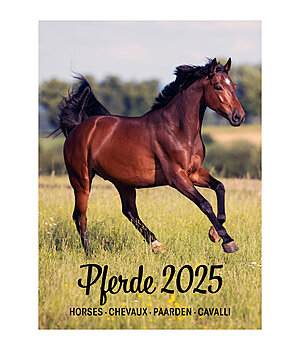Coat and mane care of horses
Regular grooming of the horse’s coat and mane is important for keeping the skin and hair healthy. But why is coat and mane care so important when horses in the wild can manage without a curry comb, hoof pick and mane comb?

Why is coat and mane care for horses so important?
Grooming and mane care is not only important for our domestic horses. Wild horses also groom each other. Mutual grooming is understood as a friendly turn between horses – therefore grooming the horse contributes to the bond between the horse and its owner. Other reasons why you should not neglect grooming your horse are the following:
- Chafing under riding equipment is usually caused by sticky and dirty coats.
- Injuries, infestations of parasites or skin diseases are identified more quickly by the daily grooming routine
- Most horses enjoy the massaging movements of brushes, curry combs and the like, which also stimulate blood circulation and gently loosen muscles.
- During the coat change, horses lose a large amount of hair, which also causes severe itching during the transition period and is a great nervous strain for the horse.
Do not exaggerate the coat and mane care of your four-legged friend. Too frequent, intensive grooming and the use of unsuitable care products can damage the natural acid mantle of the skin and the greasy film of the hair. This opens the gates for bacteria, pathogens or harmful substances. Unless the horse is worked and a saddle, bridle, etc. are put on, dried layers of mud and dust can remain on the horse, especially in summer. This gives the horse a natural insect and sun protection.
Our tip:
When choosing horse shampoos, especially for sensitive horses, make sure that the product is pH neutral and contains as few additives and fragrances as possible.

What belongs in a grooming box for horses?
A fully equipped grooming box is part of every horse’s basic equipment. Grooming utensils, such as a curry comb, a grooming brush and various types of brushes are compulsory for the horse’s coat and mane care.
This is the only way to protect the horse from skin irritations, parasites and chafe marks caused by dusty fur in the saddle area.
How to groom your horse?
After you equipped the grooming box with all the necessary grooming utensils, you can start grooming your horse’s coat and mane. The procedure may depend on the degree of dirt and may vary from horse to horse. For a horse that is completely muddy, you will start with different steps than for a horse that has not previously rolled.
A certain grooming routine will help you not to skip any important steps and will bring your horse to a high gloss.
Find out how to turn you mucky pup into a shiny horse in this guide „How do I groom my horse?“.


How to wash your horse?
Showering a horse can have several reasons. Either it is a hot summer day and you want to cool your horse down a bit. Or your horse has been sweating after riding and you want to release it from sweat.
In order to keep the natural protective film of the horse’s skin and hair, a horse should not be washed too often. You should also keep a few important things in mind when showering the horse so as not to expose it to colic or a cold.
Whether you want to make your horse shine for the show or treat the sensitive skin of your eczema sufferer – in this guide we give you tips for the correct horse wash.
Coat change of the horse
Twice a year, the horse undergoes a coat change, which demands a lot from its metabolism. In addition to adapted feeding, you can also support your horse externally during the coat change. Often times the coat change is associated with considerable itching. Furthermore, appropriate massaging and grooming can ease the horse’s change of coat.
But the horse’s coat change does not only begin when the first hairs fall out.
In this guide we show you which grooming utensils you can use to support your horse during the coat change.


Horse clipping patterns
Horses that are also trained in winter do not only sweat a lot because of the work. Especially the thick winter coat can cause a lot of trouble for the sweating horse. The risk of catching a cold or an infection increases massively for a horse with a thick winter coat that sweats regularly. Therefore, it is a good idea to clip the coat of some horses.
But be careful: Clipping is not suitable for all horses!
We show you which clipping pattern is suitable for which horse and give you valuable tips for the clipping process.


